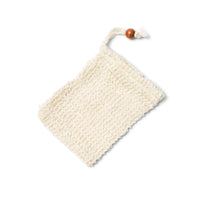
Year after year my news channels and social media are filled with terrifying stories, images, and videos of natural disasters plowing their way through my home state and beyond. I have not personally been a victim of these tragedies but I have loved ones and communities very close to my heart that have. While I always hope that these tragedies do not occur, I know that this is the reality of climate change and I refuse to be unprepared for such an emergency.
As I plan for the potential of a natural disaster, I have done some research and began to put together an emergency disaster kit. While I want to retain my values of sustainability, I recognize that the health and lives of myself and my loved ones is the number one priority. With that being said, a completely zero-waste disaster kit may not be feasible but there are switches I can make to create the most eco-friendly kit possible. I have put together such a list so that you and your loved ones are prepared for the worst without compromising your health or values.
The Department of Homeland Security lists these as essential components of a disaster kit:
- Water
- Food
- Radio
- Flashlight
- First aid kit
- Extra batteries
- Whistle
- Dust mask to help filter contaminated air and plastic sheeting and duct tape to shelter-in-place
- Moist towelettes, garbage bags, and plastic ties for personal sanitation
- Wrench or pliers to turn off utilities
- Can opener
- Local maps
- Cell phone with chargers and a backup battery

Water
During or after a natural disaster, it is possible, and often the case, that your normal water source will not be available. In fact, after natural disasters, water is the most urgent supply delivered by rescue workers. There are many possible reasons for this, but storing separate alternative sources is the best way to prepare for such a situation. It is recommended, by Ready.gov, that you have one gallon of water per person per day for at least three days. This amount takes into account drinking and sanitation purposes. As emergencies are unpredictable, I have listed bulk, individual, and filter options so that you can be prepared for any situation.
BULK
For water in bulk, I recommend purchasing and using 5 gallon refillable water jugs. These can easily be found on amazon or at your local water store. These jugs are an eco-friendly and equally useful alternative to the single use plastic jugs that are often used for disaster kits. I also recommend finding and utilizing a spout for these jugs. While this is not imperative, it does make it easier to ration and pour.
INDIVIDUAL
For individual water sources, Path Water is giving the “normal” store-bought water bottles a run for their money. This water company bottles responsibly and locally sourced water in aluminum, reusable containers. Not only will these bottles bring you fresh water in times of crisis, but you can reuse the containers for as long as you need. These bottles also offer 25 oz options, therefore providing more water while taking up less space and using less waste. You can order them online or find them at your local grocery store.
Another great option is Just Water. This company is B Corp certified and bottles their natural spring water in a paper-based bottle with a plant based cap. It is all responsibly sourced and comes in packs of 24. These containers are not as sturdy as the Path Water containers but are still sustainable, eco friendly alternatives that can be used again and again.
FILTER
While storing water is a necessary part of any disaster kit, it is imperative that you also plan for the potential of running out, not having access, or your sources being contaminated. In the wise words of Phoebe Buffay, “it’s just good sense to backup your backup.” So, I have added a water filter to my list of essentials. This way, you can have access to filtered water in even the most unfortunate circumstances. There are many amazing water filter options including The LifeStraw. It filters up to 1,000 liters of water and does so without using chemicals! It does not require any batteries or charging, so you can simply purchase, pack, and be prepared! While this is not a completely waste-free option, it is reusable to an extent and has the potential to save lives in times of crisis!

Food
It is recommended that your disaster kit includes AT LEAST a three day supply (72 hours worth) of non-perishable foods. This can include canned goods, dried food, nuts, crackers, pet food, etc. I have put together a list of eco-friendly food options for your kit, but encourage you to reflect on your daily eating habits and store foods that are similar to your everyday meals. In a time of crisis, keeping things consistent can be helpful mentally and physically, and one way to do so is by eating similar foods. These foods can be considered comfort food in a time of great stress and extreme mental and physical exhaustion.
CANNED/JARRED
Canned/jarred foods will most likely take up the bulk of your stored food. Here is a list of options for you to consider when making your disaster kit:
- Protein: beans (black, pinto, garbanzo, kidney, etc.), edamame, nuts, nut butters (peanut, almond, cashew, etc.), fish, poultry, or meat
- Fruit: jackfruit, pears, pineapples, mandarin oranges, peaches, etc.
- Vegetables: tomatoes, green beans, pumpkin, carrots, peas, olives, etc.
- Meals: soup, chili
When purchasing your canned goods, make sure you also have (and pack) a manual can opener.
DRIED/BULK
Dried foods are also a wonderful and long-lasting option for preparing a disaster kit. Instead of relying on pre-plastic packaged options that are high in sodium and low in nutritional value, I encourage you to either dry your own (if you have the time/resources) or to buy from the bulk section of your local grocery store. Both of these options can be stored in reusable containers/mason jars that can then be used for other purposes during your time of crisis.
Here is a list of our go-to dried options:
- Protein: lentils, beans, nuts, seeds
- Grains: oatmeal, rice, cereal, quinoa
- Fruit: raisins, apricots, mangoes, figs, apples, coconut, etc.
- Vegetables: peas, beans, tomatoes
- Spices: salt, any spice of your choice
- Snacks: banana/plantain chips, trail mix, granola, vegetable chips, pretzels
ON THE GO
There are not many eco-friendly on-the-go options. However, it is important that you have some easy to grab, light weight, nutrient dense options in case you need to evacuate or move quickly and cannot grab or carry your canned/bulk foods.
With that being said, an eco-friendly option would be Clif Bars. Not only are these bars packed with nutrients and protein, but they work with Terracycle to properly recycle the wrappers and keep them from landfill.
Other Terracycle partner options for young children and liquid-lovers alike are Once Upon A Farm, Cerebelly, North Coast, and GoGo Squeeze. These companies make easy-to-grab on-the-go pureed whole food options and can be recycled properly through Terracycle. I encourage you to keep the wrappers of these items when you are finished so they can be properly recycled at a later time.
You can find other Terracycle-partner options here.

Pet Food
If at home, pet food should not be an issue as most dry and wet pet food is not perishable and does not require anything more than something to put it in. However, if you usually feed your pet a refrigerated or perishable food option, I recommend having a dried or canned option for emergencies.
If you do not already have a preferred option, Open Farm is a humanely and sustainably sourced pet food option and Terracycle partner.

Radio & Flashlight
Say it with me, “HAND CRANK.” The hand crank option for your small electronics is going to be your most eco-friendly and practical option. Not only do you not waste money and time on disposal and hard to recycle batteries, but you can rely on your electronics without worrying about losing power. EVER.
For those of you who already have battery powered radios and flashlights and do not wish to buy new ones, there is always the option of opting for rechargeable batteries. These rechargeable batteries are also a wonderful option for the “Extra Battery” portion of your disaster kit.

First Aid Kit
Building an eco-friendly first aid kit is an art and could be an entire blog post in itself. Actually, it is. Kathryn Kellogg, author of Going Zero Waste, has written a beautiful blog post on building an eco-friendly first aid kit. Feel free to access and utilize her blog post here.

Dust Mask
Your choice in dust mask should not be overlooked. This component of the kit is directly tied to your health and should not be taken lightly. While single-use, disposable dust masks, like ones you can find in doctor’s offices or hospitals, are easy to obtain, they do not filter out contaminants and are simply not ideal for times of crisis. Instead, I suggest looking into a reusable, sturdier, and more effective option. Cambridge Masks filter nearly 100% of air pollutants and protect against harmful gases, allergens, smoke, odors, pathogens, and more. This mask is also adjustable which helps it form directly to your face, and enforces the efficiency of the mask. I personally do not travel anywhere without my Cambridge Mask and highly recommend adding these as a staple of your disaster kit.

Single-Use Items
While we strive to make our disaster kits as eco-friendly as possible, our main goal is to make sure that everyone is properly prepared for an emergency. Your health and well-being is of the utmost importance. That is why we encourage you all to not shy away from including duct tape, garbage bags, wet-wipes/moist towelettes, and zip ties to your kit if you feel they are essential to your safety. These may not be reusable but in a time of crisis they could be life-saving.

Added Essentials
While these items may not be pertinent to survival, for me they are essential additions to any on-the-go or emergency bag. I have decided to include a bar of soap for personal hygiene purposes as well as a shampoo/conditioner bar set, toothbrush, and lotion bar. These additional items are for my personal sanity and hygiene in times of crisis. You can find all my added essentials here.
While natural disasters and emergency situations are extremely terrifying and unexpected, being prepared is the best way to combat that fear and unpredictability. By making a kit with sustainable options, we are not only keeping ourselves and loved ones safe, but supporting ourselves and our world through the process.





